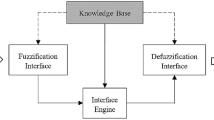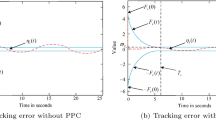Abstract
This paper proposes a human control model in teleoperation rendezvous on the basis of human information processing (perception, judgment, inference, decision and response). A predictive display model is introduced to provide the human operator with predictive information of relative motion. By use of this information, the longitudinal and lateral control models for the operator are presented based on phase plane control method and fuzzy control method, and human handling qualities are analyzed. The integration of these two models represents the human control model. Such a model can be used to simulate the control process of the human operator, which teleoperates the rendezvous with the aid of predictive display. Experiments with human in the loop are carried out based on the semi-Physical simulation system to verify this human control model. The results show that this human control model can emulate human operators’ performance effectively, and provides an excellent way for the analysis, evaluation and design of the teleoperation rendezvous system.
Similar content being viewed by others
References
Tang G J, Luo Y Z, Zhang J. Mission Planning for Space Rendezvous and Docking. Beijing: Science Press, 2008
Zhou J Y, Zhou J P, Jiang Z C, et al. Investigation into pilot handling qualities in teleoperation rendezvous and docking with time delay. Chin J Aeronaut, 2012, 25: 622–630
Sheridan T B. Space teleoperation through time delay: review and prognosis. IEEE Trans Robot Autom, 1993, 9: 592–606
Liu M Q. Unified stabilizing controller synthesis approach for discrete-time intelligent systems with time delays by dynamic output feedback. Sci China Ser F-Inf Sci, 2007, 22: 636–656
Wang Y J, Sun F C. Space teleoperation with large time delay based on vision feedback and virtual reality. In: Proceedings of the IEEE/ASME International Conference on Advanced Intelligent Mechatronics, Singapore, 2009. 1200–1205
Bilimoria K D, Mueller E R, Frost C R. Handling qualities evaluation of piloting tools for spacecraft docking in earth orbit. J Spacecr Rockets, 2011, 48: 846–855
Innocenti M, Balluchi A, Balestrino A. Modeling of nonlinear human operator in the controlloop: preliminary results. J Guid Control Dyn, 2000, 23: 736–739
Robert B. A fuzzy logic model of human pilots during space shuttle rendezvous. In: Proceedings of the AIAA Guidance Navigation and Control Conference, San Diego, 1996. 1–7
McRuer D T, Jex H R. A review of quasi-linear pilot models. IEEE Trans hum factor electron. 1967, 8: 231–249
Shinners S M. Modeling of human operator performance utilizing time series analysis. IEEE Trans Syst Man Cyb, 1974, 4: 446–458
Nieuwenhuizen F M, Zaal P M T, Mulder M, et al. Modeling human multichannel perception and control using linear time-invariant models. J Guid Control Dyn, 2008, 31: 999–1013
Baron S, Kleiman D L, Levison W H. An Optimal Control Model of Human Response. NASA Technical Report SP-Z15, 1969
Gestwa M, Bauschat J M. Development of a fuzzy-controller with a state machine as a cognitive pilot model for an ILS approach. In: Proceedings of the AIAA Infotech@Aerospace 2007 Conference and Exhibit, Rohnert Park, 2007. 1–13
Long S Z. The Astronaut’s fuzzy control model and prospect for its application. Aerosp Control, 1990, 2: 53–59
Dong W H, Sun X X, Liu S G, et al. Modeling of pilot based on adaptive neural fuzzy inference system. In: Rroceedings of the 5th International Conference on Intelligent Computation Technology and Automation, Zhangjiajie, 2012. 210–212
David K G. Orbital rendezvous: when is autonomy required? J Guid Control Dyn, 2007, 30: 974–981
Luo Y Z, Tang G J. Spacecraft optimal rendezvous controller design using simulated annealing. Aerosp Sci Technol, 2005, 68: 732–737
Luo Y Z, Li L B, Wang H, et al. Quantitative performance for spacecraft rendezvous trajectory safety. J Guid Control Dyn, 2011, 34: 1264–1269
Ma G C, Zhang W L, Feng B M, et al. A nonlinear law for the short distance tracing controller of space robot. Syst and Control Aerosp and Astronaut 2006, 962-966
Yang J, Jiang G H, Chao J G. A cross drone image-based manual control rendezvous and docking method. J Astronaut, 2010, 31: 1398–1404
Wei W, Mbede J B, Huang X H, et al. Neuro fuzzy and mode-based motion control for mobile manipulator among dynamic obstacles. Sci China Ser F-Inf Sci, 2003, 46: 14–29
Tong S C, Ren C E, Li Y M. Adaptive fuzzy decentralized control for nonlinear large-scale systems based on high-gain observer. Sci China Inf Sci, 2012, 55: 228–242
Ding Y L. Man-Machine Engineering. Beijing: Beijing Institute of Technology Press, 2011. 38–42
Cheatham D C, Hackler C T. Handling qualities for pilot control of Apollo lunar-landing spacecraft. J Spacecr Rockets, 1966, 3: 632–638
Nicholas S, Frances P, Mark K, et al. Human Operator Performance of Remotely Controlled Task: a Summary of Teleoperator Research Conducted at NASA’s Marshall Space Flight Center Between 1971 and 1981. NASA Technical Report TN D-5153, 1982
Anon. Lunar Landing Research Vehicle: Estimated Handling Qualities. NASA Technical Report CR-127487, 1964
Author information
Authors and Affiliations
Corresponding author
Rights and permissions
About this article
Cite this article
Zhang, B., Li, H. & Tang, G. Human control model in teleoperation rendezvous. Sci. China Inf. Sci. 57, 1–11 (2014). https://doi.org/10.1007/s11432-013-5055-7
Received:
Accepted:
Published:
Issue Date:
DOI: https://doi.org/10.1007/s11432-013-5055-7




